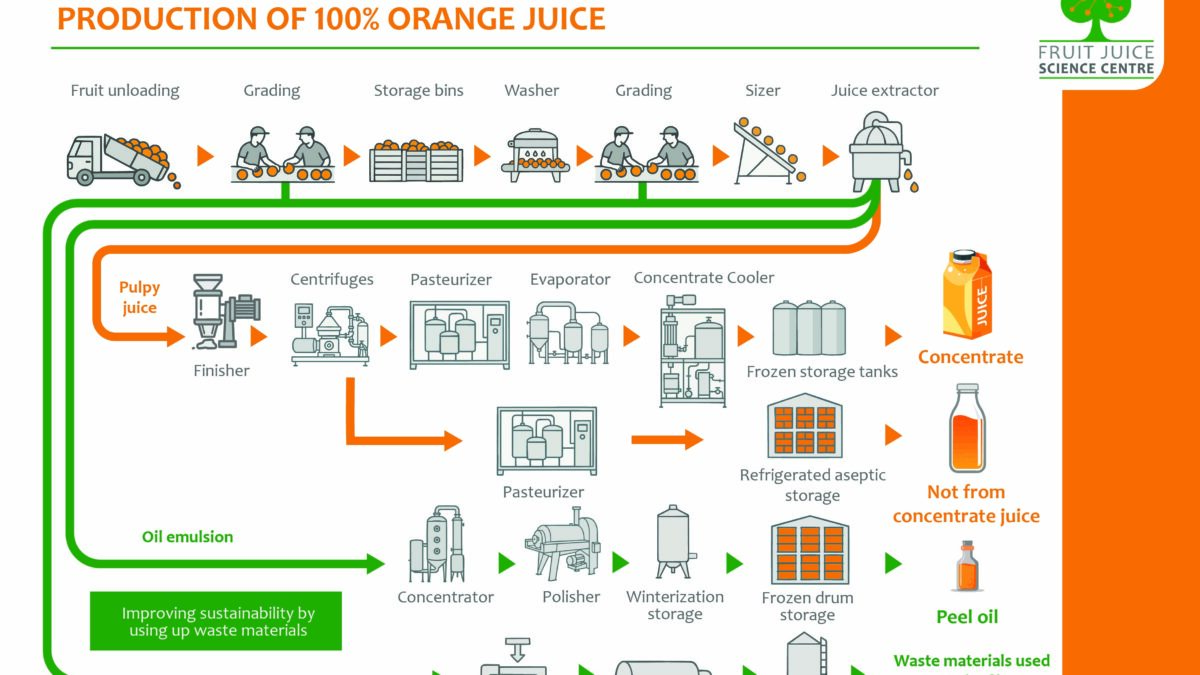
Brix y acidez en cítricos: cómo se mide la calidad del zumo
16 de octubre de 2025
Blend de naranja y mandarina: perfiles sensoriales y usos industriales
21 de noviembre de 2025¿La elaboración del zumo de fruta produce muchos residuos alimentarios? La respuesta es no.
La última infografía de Fruit Juice Science Centre muestra cuán sostenible es toda la cadena de producción del zumo de naranja: incluso las semillas, las fibras blancas y la pulpa se aprovechan para elaborar pectina, un ingrediente rico en fibra, así como aceite esencial de naranja y alimento para animales.



